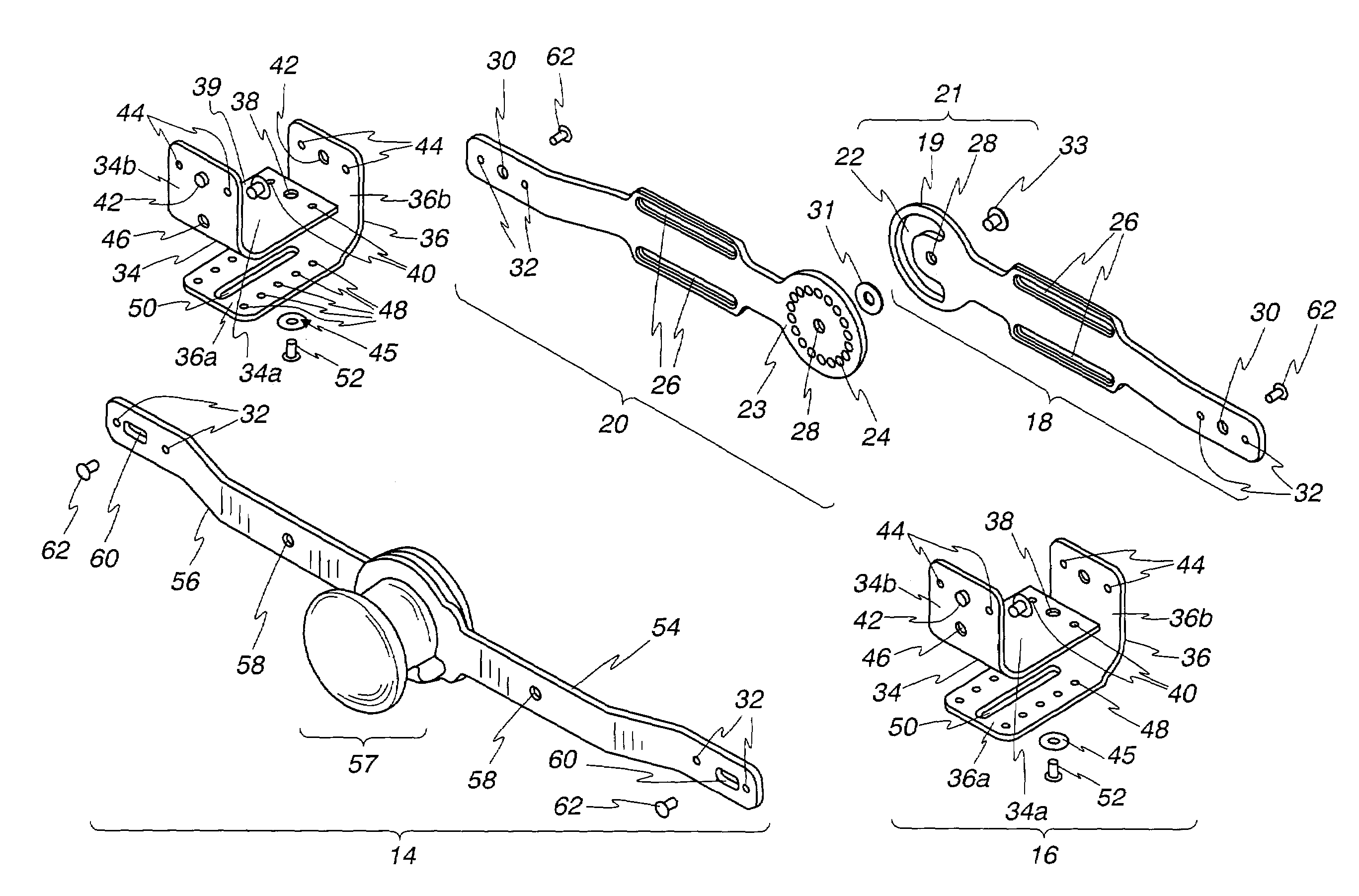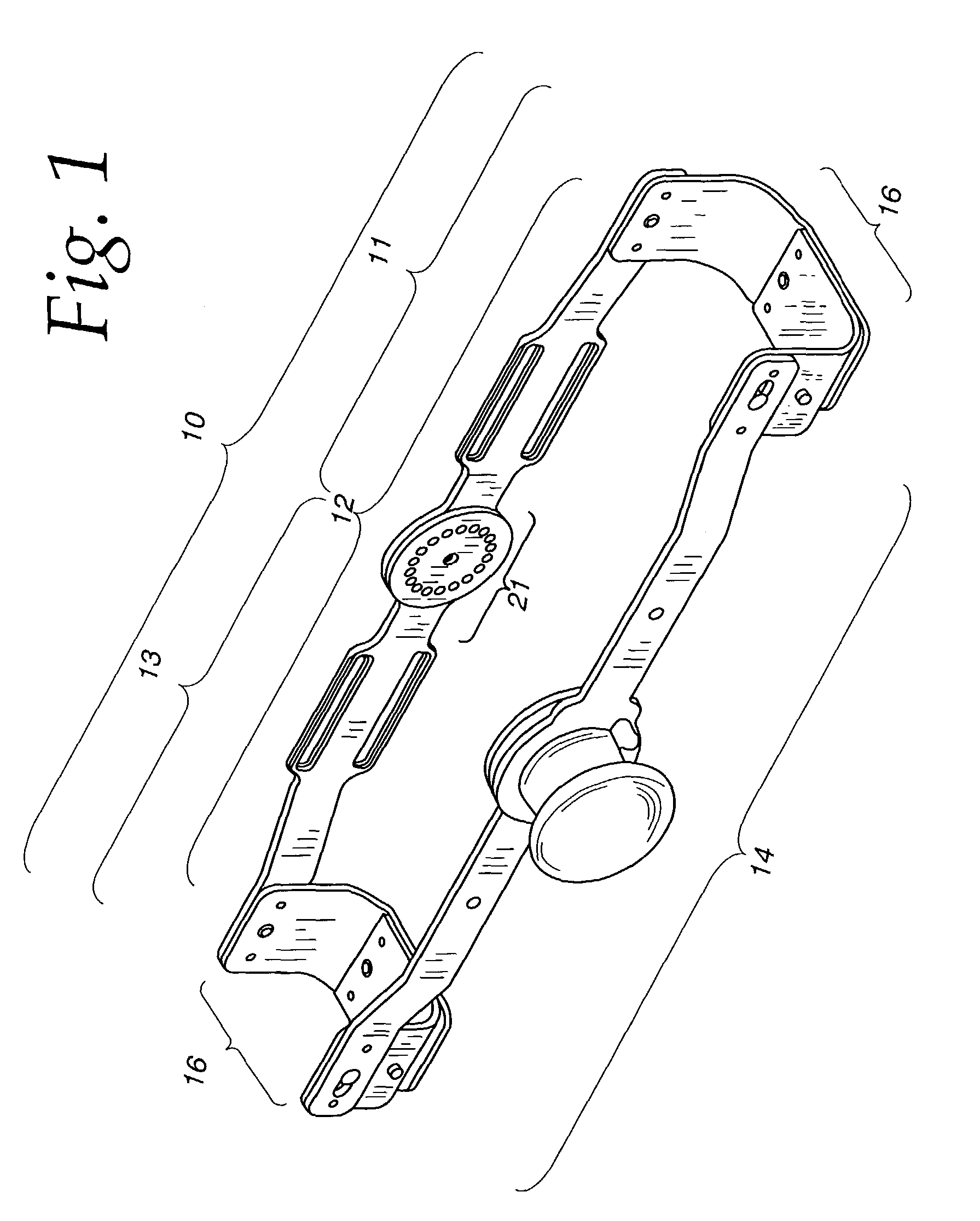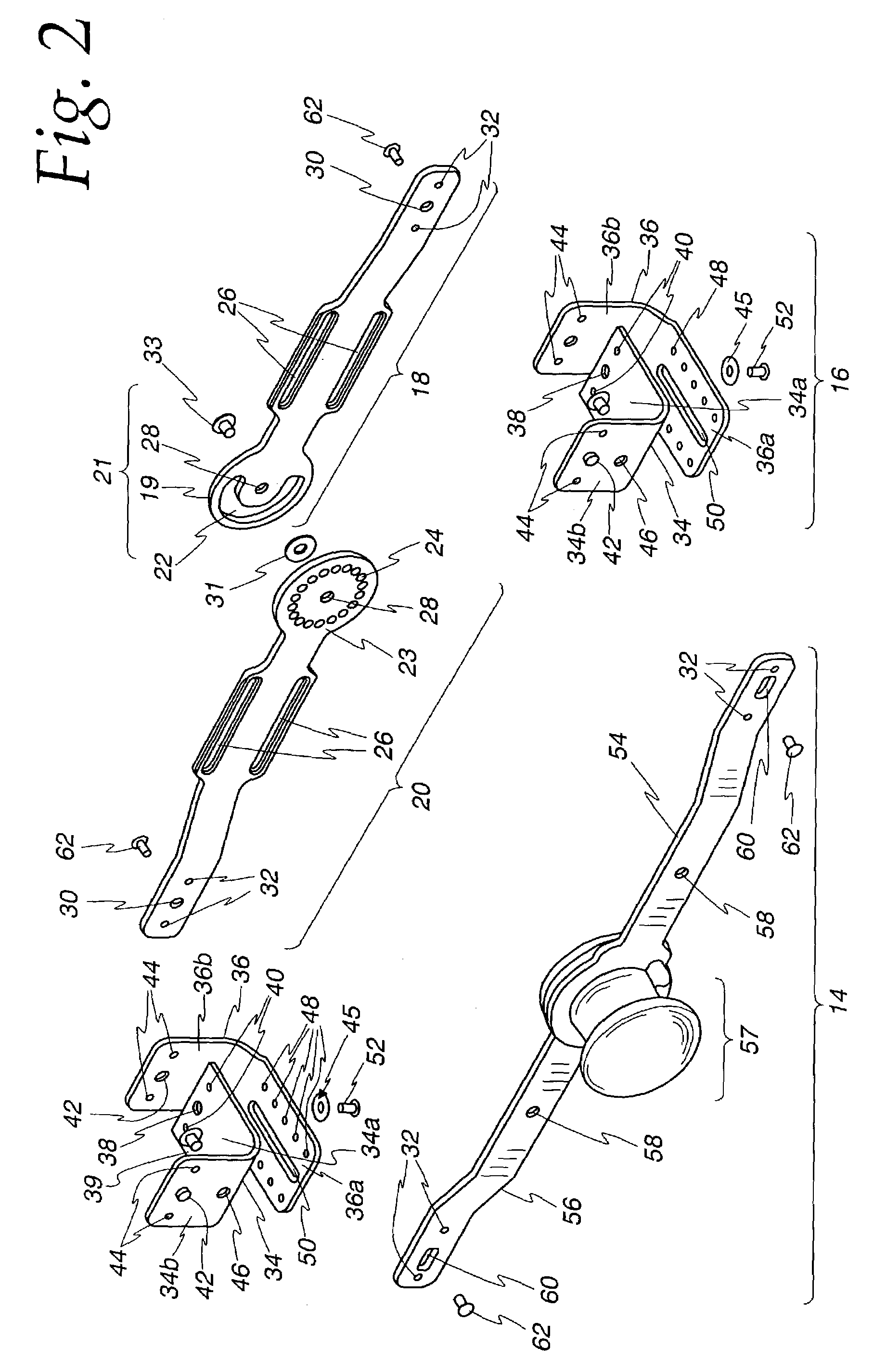Multi-functional joint brace
a multi-functional, joint brace technology, applied in the field of joint support devices, can solve the problems of increasing the time and expense required to fully heal a damaged joint, increasing the cost and inconvenience of repairing and rehabilitating a joint, and preventing so as to facilitate switching, provide stability to the wearer, and prevent wearer discomfort or injury.
- Summary
- Abstract
- Description
- Claims
- Application Information
AI Technical Summary
Benefits of technology
Problems solved by technology
Method used
Image
Examples
Embodiment Construction
[0037]The following detailed description is of an embodiment of the invention wherein the multi-functional brace is adapted for use with an elbow. It is to be understood, however, that the invention is not so limited. For example, those skilled in the art will understand how to adapt the principles of the invention as disclosed herein to create a multi-functional brace for use with a knee or any other joint.
[0038]Reference is now made to the figures wherein like parts are referred to by like numerals throughout. With particular reference to FIG. 1, a multi-functional elbow brace 10 according to the present invention comprises a hinged movement arm 12 and a hinged drive arm 14. Adjustable means for connecting hinged movement arm 12 and hinged drive arm 14 comprise adjustable cross brackets 16. Brace 10 comprises a proximal portion 11 and a distal portion 13. In some embodiments, the proximal portions of hinged movement arm 12 and hinged drive arm 14 can be wider than the distal porti...
PUM
 Login to View More
Login to View More Abstract
Description
Claims
Application Information
 Login to View More
Login to View More - R&D
- Intellectual Property
- Life Sciences
- Materials
- Tech Scout
- Unparalleled Data Quality
- Higher Quality Content
- 60% Fewer Hallucinations
Browse by: Latest US Patents, China's latest patents, Technical Efficacy Thesaurus, Application Domain, Technology Topic, Popular Technical Reports.
© 2025 PatSnap. All rights reserved.Legal|Privacy policy|Modern Slavery Act Transparency Statement|Sitemap|About US| Contact US: help@patsnap.com



